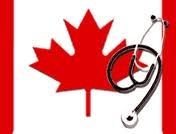
Canada’s New Health Care Discord
By: Dan Donovan and Claire Tremblay
In December, federal Finance Minister Jim Flaherty unilaterally unveiled a new non-negotiable health-care funding plan that runs to 2024. Under this plan Federal healthcare transfers will continue to increase by six per cent until 2016-17. After that, increases will be tied to economic growth including inflation which is currently at four per cent and will never fall below three per cent. Kevin Page, the parliamentary budget officer says the new health care funding formula will slowly reduce Ottawa’s support for Medicare, while putting the federal government on a solid fiscal footing for the future.
However, the provinces will have to shoulder a growing health care burden over the long run and they can’t afford to do that without cutting spending elsewhere or raising taxes. Assuming the federal government’s planned health care transfers grow at 3.9 per cent a year from 2017-18, Page says his office’s projections show that the federal revenues to health will be significantly reduced while the provinces debt to cover health care will increase substantially.

That means Ottawa’s share of provincial health care funding will fall to an average of about 18.6 per cent for the coming two decades from about 20.4 per cent today and will continue to slide significantly after 2035 if the policy persists. The Provincial Premiers met in Victoria B.C. on January 16 and heaped scorn on Prime Minister Stephen Harper for an “unprecedented” and “unacceptable’ move to limit federal financing for Medicare without first consulting them. Quebec Premier Jean Charest said “it’s obviously unacceptable. The federal system of government cannot work that way” and noted that “when Medicare was initiated in the 1950s and 1960s, the federal government drew the provinces in by picking up 50 per cent of the health care tab.” Under the new Harper formula, this could drop over the long haul to as low as 11 per cent.Senior government officials told Ottawa Life said that 6 per cent annual increases are not affordable and the problem is not the amount of money provided, but rather how some of the money is being spent. They cited the Ontario Liberal government’s waste of $1 billion health dollars on an eHealth scandal and the millions reported wasted by the Ontario government’s air ambulance agency on salaries and perks. Premier Dalton McGuinty noted that “leadership on health care for the feds is not an option. It’s a solemn responsibility.”
The new health care agreement might be better named a discord.
All of this has put Federal Minister of Health, the Hon. Leona Aglukkaq in the hot seat and there is no question she will be there for quite some time. Ottawa Life had the chance to sit down with her recently. While the situation has changed somewhat given the recent Premiers’ meeting, we share some of her thoughts.
When asked about her response to the negative reaction from the Premiers regarding the new Harper funding formula, Aglukkaq says she wrote to her provincial and territorial colleagues reminding them that “Canadians are best served when we work together.” She is also proposing “greater collaboration between the federal and provincial-territorial governments — including a pan-Canadian approach for monitoring how the health care system is performing as the provinces search for innovative approaches to improve health care and curb escalating medical costs.”
Aglukkaq says she would “be pleased to continue to engage in intergovernmental discussions and actions with respect to innovation, improved accountability and other areas that will enable better, more sustainable health care.” However, she made it clear that there are limits on the health care funding options from the federal government. Rather than increased spending on health care, Aglukkaq says, “we could also pursue a co-ordinated approach to measuring and reporting performance across provincial and territorial jurisdictions in order to improve health care for Canadians.”

But British Columbia Premier Christy Clark isn’t biting, saying that the new Harper funding formula will create 13 separate health care systems with vastly different levels of service. “I think Canadians want one national system with comparable levels of service.”
What the federal government has offered is a pure per capita funding over the long term. While this ensures stable funding and predictability for budget making, some provinces gain and others lose. Under the new formula, Alberta will gain $1 billion, while B.C., Ontario and Quebec, all provinces with more seniors and more demand for health services, will all lose money.
The Harper formula will see the feds hand over health-care transfer money with no strings attached. The nagging ongoing question of how the government would address prescription drugs to make sure all Canadians – regardless of income – have access to medication? How would wait times for medical care be reduced? When will every Canadian have a family doctor it can call their own? There are a lot of unknowns and they are now solely up to the provinces. For many, this is going to create a confusing, chaotic health care system. Given the fiscal and demographic realities most of them face, one can only assume that controlling health cost inflation will trump improved service in provincial health reforms.
The provincial ministers have formed a “Health Care Innovation Working Group” and Ontario’s Dalton McGuinty and Saskatchewan’s Brad Wall have proposed a federal “innovation fund” that would help provinces implement specific programs in key areas — potentially such as home care and seniors care that would address priorities, other funding options and ways to renew the health-care system. Aglukkaq has been clear that there will be no new funding.

On some of the other critical issues such as drug coverage, which will become a bigger issue for provinces, Aglukkaq said that too is a matter for the provinces and territories. “With respect to drug coverage, provinces and territories are responsible for determining whether or not to provide their residents with publicly-financed drug therapy,” she told Ottawa Life. “As provinces and territories continue work on their own priorities, we welcome the progress made on improving drug access for their residents and welcome opportunities to work with them on areas of common interest, in ways that respect jurisdictional responsibilities.” In other words, it’s time for the big drug companies to get lobbyists to the provincial capitals because that is where the action is headed.
Her position, it seems, will not change. What this all means is that how much you spend on prescription drugs will continue to depend on what province you live in. Of the 13 jurisdictions, six, including Ontario, put more pressure on private drug plans to cover drug costs. Healthy Canadians who work full time and have insurance are covered. Sicker Canadians are not. A 2011 Commonwealth Fund International Health Policy Survey of 4,000 Canadians showed that cost is a barrier to health care for sicker Canadians. One in four Canadians who rated their health as fair or poor skipped a dose of medication or did not fill a prescription due to cost. This compares to ten per cent of other Canadians. Another one in eight skipped a recommended test or follow-up treatment due to cost.
Then there is Aboriginal health. On this, Aglukkaq offered no specific comment. But it is a situation in need of urgent redress. The Aboriginal population is Canada’s fastest growing demographic. It also faces developing world rates of chronic illness and infant mortality. The Aboriginal population increased by 45 per cent between 1996 and 2006, six times the rate of non-Aboriginals. In 2008, the tuberculosis rate for Inuit was 186 times greater than for non-Aboriginals. For First Nations it was 31 times higher. Despite this, funding for health (and education) to First Nations has been capped at a 2 per cent annual increase since 1996. By contrast, provinces – under the current health care accord – receive a guaranteed (for now) six per cent increase in transfers each year. First Nations and Aboriginal health care is provided by the federal government. At press time, the federal government was about to head into negation talks with First Nations on a number of issues. Health care no doubt will be part of the discussions.

The challenges Aglukkaq faces in creating a new equitable health care accord that works are great. In the end, only time will tell how Aglukkaq intends to deal with Canada’s ailing health care system. With health care dominating provincial budgets (for example, over 40 per cent of Ontario’s budget goes towards health care alone) and dwindling budgets due to deficits and required cuts, this issue is going to be tough for all politicians.
But as Aglukkaq told Ottawa Life, “with over two years left in the 2004 Accord, there will be ample opportunity for further discussion with provinces and territories on how we can build on current commitments to make the health system more sustainable while improving accountability and demonstrating results to Canadians, in the North and across Canada.”
Let’s hope she’s right. With all the different parties to consult and a multitude of problems to fix with limited money, the time available to address Canada’s health care crisis may be less than Aglukkaq thinks.








